The Fuji X10 was recently released here in Singapore and I managed to get my hands on a set. It has been a long time since I bought a compact digital camera and I have been looking out for a general purpose carry everywhere camera for quite a while now.

There are a number of detailed reviews of the X10 on the internet now and rather than rehashing the same things, I thought I would give my own impressions on how the X10 handles in the areas that I hope to use it for . . . namely family photography, street photography and travel photography. This post will focus on ‘family photography’. In my case, I approach most of my own family photography as documentary photography.
My Grandparents have been married for close to 70 years. Next year, they celebrate their Platinum Wedding Anniversary! My Granddad is now 93 and my Grandma 90. He has always been the strong but not too silent type while she has been the strong but silent type.
Early last year, my Granddad had a stroke which has left him quite immobile. He lost his ability to speak and swallow. As far as I can remember, my Grandparents have always used loving terms of endearments to address each other. He usually addresses her as ‘Beautiful’ and she addresses him as ‘Darling’ or ‘Sweetheart’. Things of course have been tough for both of them since the stroke. He can no longer say ‘Beautiful’ to her vocally but he does say it through touch and his eyes. Their love for one another still remains strong and every time I go over, I try to capture a part of it with whatever camera I have with me. Love is worth recording and I think it is a good testament to who my Grandparents are.
The following is a selection of photos I took with the X10 during my last visit.

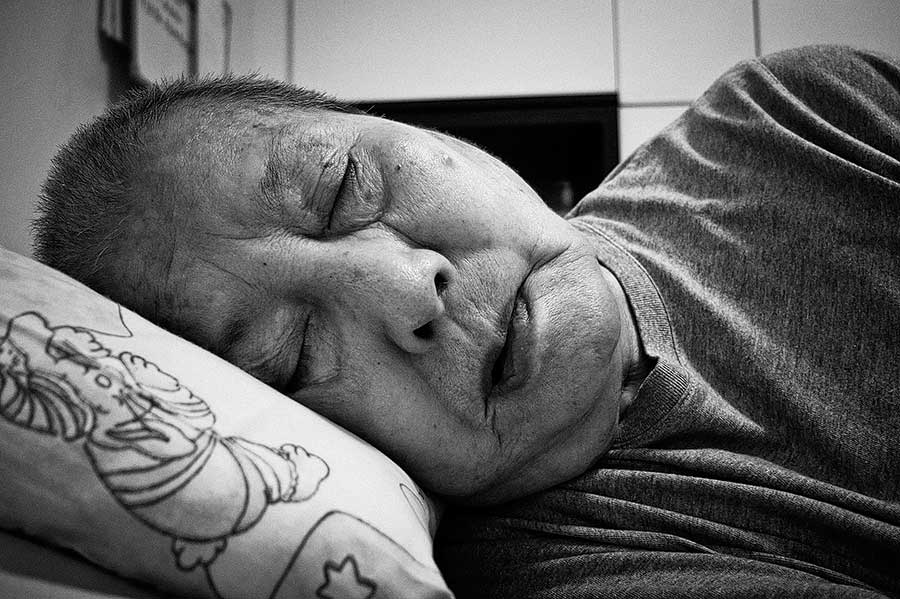

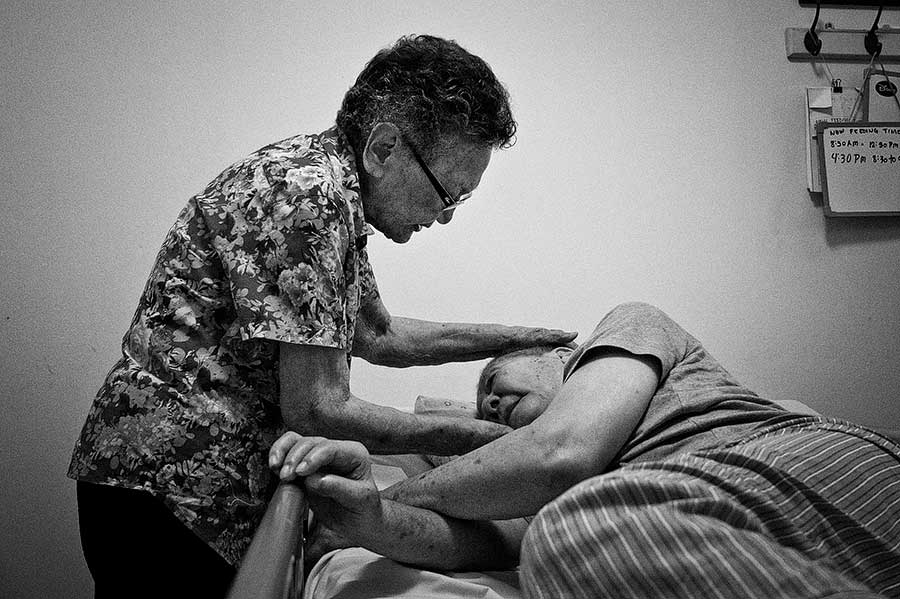
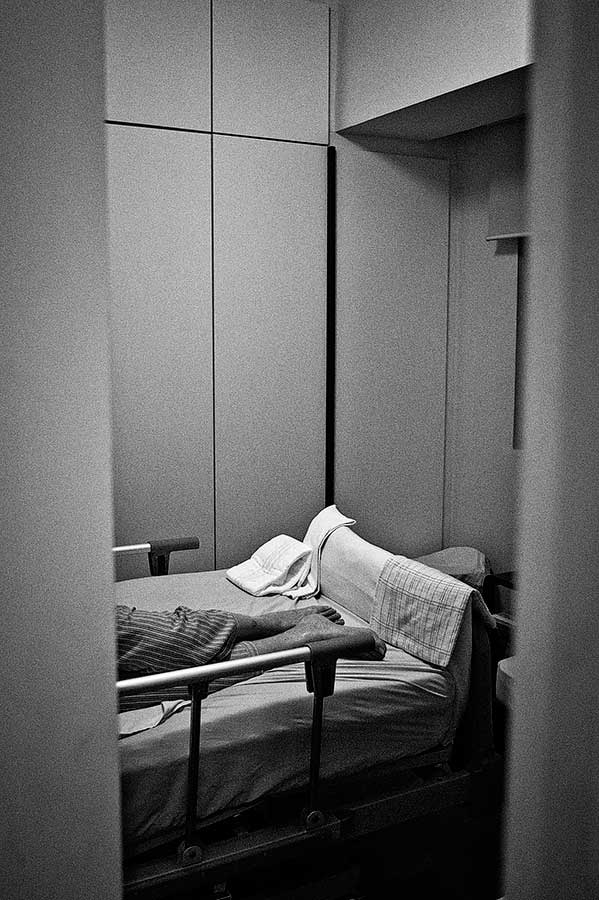
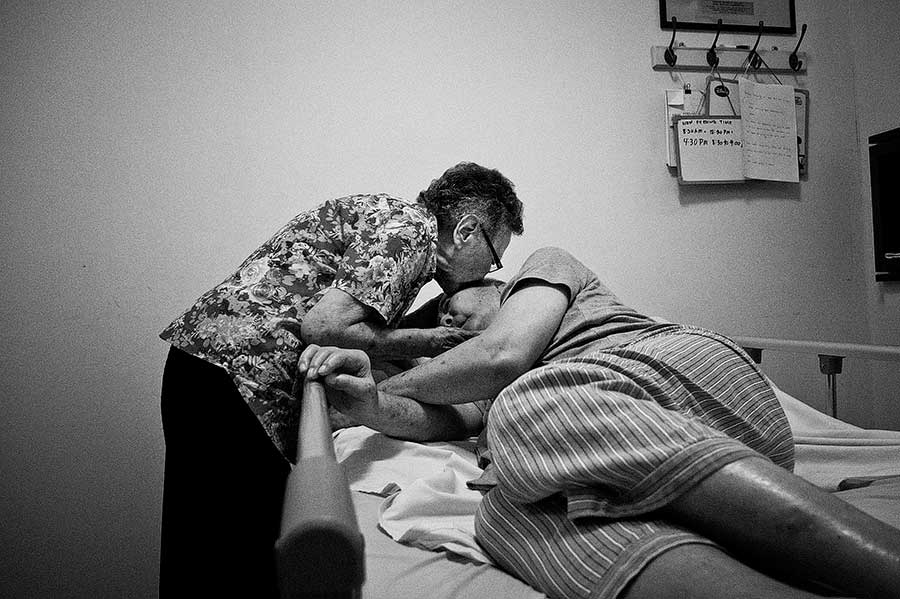
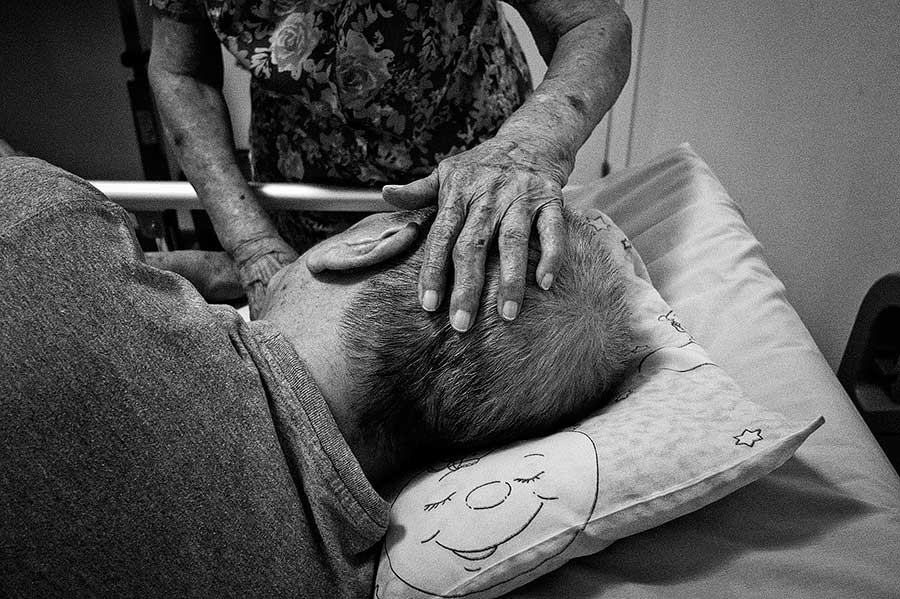
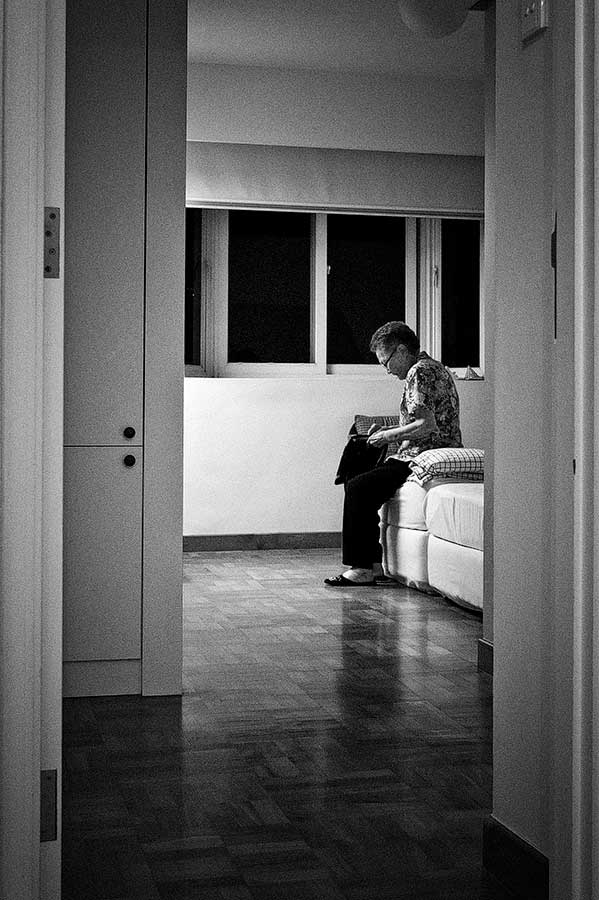
The following are some of my observations of the X10 during the first few days of usage.
- The optical viewfinder is bright, clear and quite usable. I prefer to use an optical viewfinder for framing my photographs rather than the LCD screen and up to now have found the compact cameras available sorely lacking in this area. Quite a number of manufacturers have added electronic viewfinders but I don’t enjoy using them. Like many have mentioned, it would be nice if Fuji could have included some basic information within the optical viewfinder (e.g. focus confirmation within the viewfinder, aperture and shutter speed). Better still if the next iteration of the camera features the hybrid optical viewfinder found in the Fuji X100.
- Auto focus is nice and snappy. Definitely quicker than the X100. If I am using the optical viewfinder, I use the center of the optical viewfinder as my ‘focus point’ and so far so good. There is a little yellow light that lights up just next to the optical viewfinder when focus locks on which is good enough for me.
- The Auto (3200), Auto (1600), Auto (800) and Auto (400) ISO modes are helpful but could be further improved. Setting the camera to Auto (800) means the X10 would automatically adjust the ISO according to the lighting conditions but never raise the ISO above ISO 800. It would be nice if there was an option to set a minimum shutter speed (e.g. 1/60s, 1/125s, etc) where the camera would only increase the ISO if the shutter speed fell below the minimum shutter speed set, else it would continue to use the lowest possible ISO. Leica have done this with their M8s and M9s and it works very well.
- When I grip the camera, I find my thumb falling on the main command dial at the back of the camera. This unfortunately causes my thumb to quite often accidentally change the settings (e.g. aperture in Aperture Priority mode). I might try adding a Thumbs Up accessory if it fits to see if it prevents this problem and improves stability.
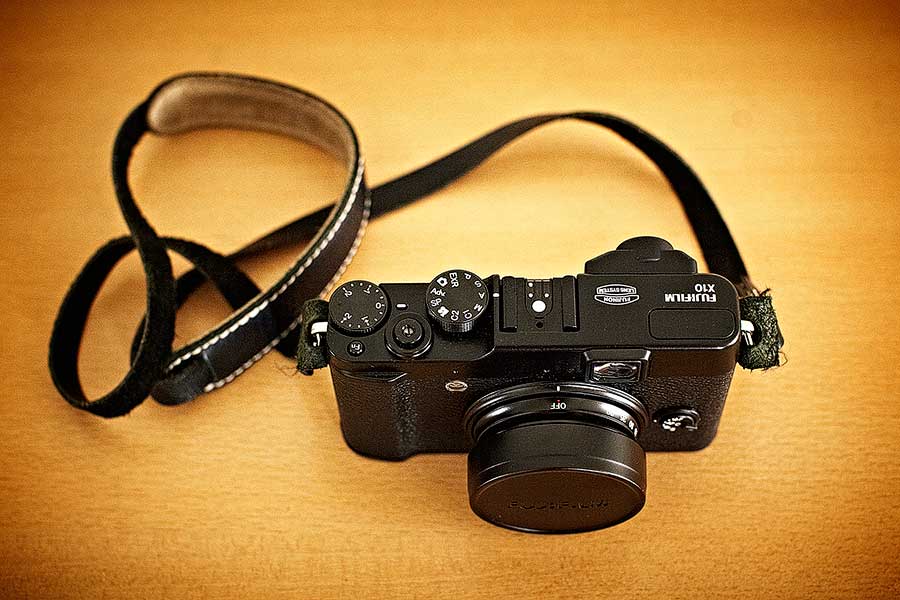
- ▪ Many people say they really like the ‘turn the lens to turn on the camera’ feature but I don’t like this feature. I would rather have a switch that can turn the camera on and off with one hand. With the X10, I need both hands to turn the camera on and off which I feel is a hassle.
- The manual zoom is nice but I find the direction to turn the lens to zoom in or out to be opposite to what I am used to which is an irritation. I am used to turning the lens clockwise to zoom in (e.g. 28mm to 50mm) but for the X10, it is the other way round. I tend to just keep it at 28 or 35mm 90% of the time anyway so this is not a big problem.
- I have been shooting RAW+JPEG but have not touched the RAW files yet as the two RAW processing softwares that I use (Lightroom and Capture One) do not yet support the X10’s RAW files. The RAW processing software (Silkypix) that came with the X10 seems like a clunky piece of software and I gave up using it after a while.
- I have been shooting up to ISO 1600 and the JPEGs look pretty good to me. I changed the Noise Reduction setting to LOW as I felt the STANDARD setting was too aggressive for my liking. The photos featured above were B&W Film Simulation JPEGs from the X10 (most of them were shot at ISO 1600). I did my normal bit of post processing on them in Photoshop (i.e. a bit of dodging, burning and curves adjustments). I will be trying out the higher ISOs over the next few days to figure out what is the maximum ISO of the X10 that I am comfortable shooting up to.
- The battery life of the X10 is quite pathetic so get extra batteries! I only took about 150 images (RAW + JPEG) and a short 1 minute video before the camera went dead from a flat battery. Hopefully, when I shoot RAW only later on and try to use the optical viewfinder more, the battery life will improve.
- The X10 is silent in operation and quite discrete. I like the all black body and wished its bigger brother, the Fuji X100 came in all black too.
- The fast lens, f2 at 28mm and f2.8 at 112mm gives quite a lot of flexibility in terms of being able to shoot in lower light.
Overall, the Fuji X10 handles pretty well. It feels good in my hands with a nice solidness to it. I enjoyed using the X10 in the continuing photo-documentation of my Grandparents and felt that it did a good job in capturing what I set out to capture. It is a very responsive camera and even though I listed out some irritations above, they are just minor irritations and none are deal breakers for me. It remains to be seen how good the quality of the files are and I will wait till I can properly process the RAW files before judging. My standard test for a camera’s file quality is to see how well they look printed out large rather than pixel peeping on the computer screen. Here are another two ‘family’ photographs.
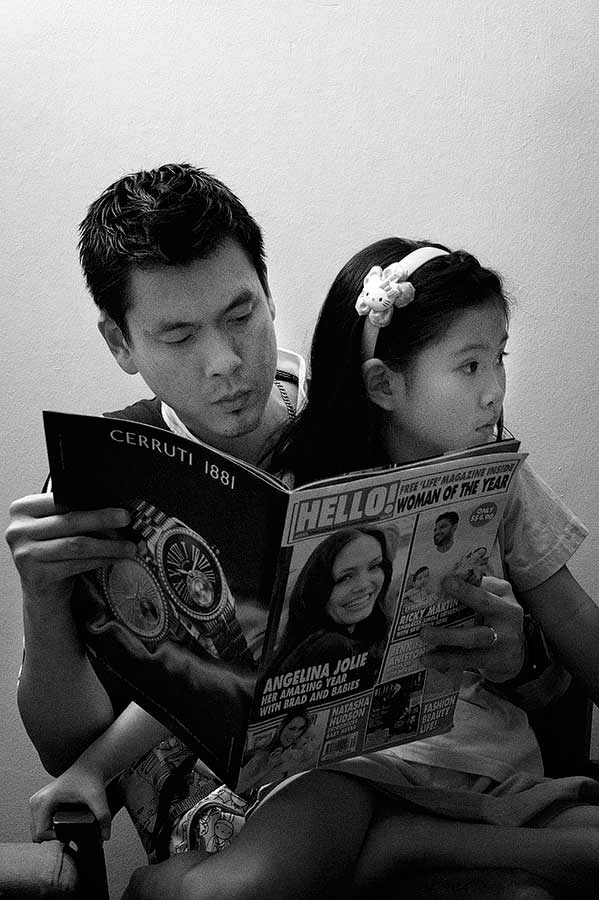

I hope to be able to find some time to test the camera on the streets during the next few days (weather and time permitting). The travel bit, I will try out when I go to Japan at the end of the month for a shoot. I am looking forward to doing a followup post to this one.
Text & Photographs by Derrick Choo.
More work from Derrick on his website: http://derrickchoo.com
Share

Comments 27
Thank Derrick ,
What a lovely n heartwarming tribute to your grandparents .
A. Winnie
Derrick, these images are really heartwarming and your grandparents’ love and care reminds me to be a great human being daily.
Hi Derrick,
Great photos of your grandparents for posterity. You are truly a professional photograhper. Winnie attended your granddad’s Wake but I had to remain in Perth to look after the grandkids and the house.
Cheers,
Sam Davamoni
Pingback: Photo Essay: Farewell Grandpa, by Derrick Choo | Invisible Ph t grapher Asia (IPA)
I know you did this a while ago but I hope you get these comments. This was a wonderful article with beautiful, meaningful photos that really spoke to me. I hope your family is doing well. Thanks for taking me inside their life.
Pingback: Street Photography in Japan with the Fuji X10 - Part 1 | Invisible Ph t grapher Asia
You have a great eye to tell the story really well.
Hi, Derrick:
Loved your pictures. You have a good eye. I just acquired an X100 and am new to post-processing. (I have never attempted RAW for this reason). What program would you suggest for a beginner to add the beautiful grain effect, as you can? Your advice would be much appreciated.
Best,
JJ
———————————
Hi JJ, thanks! I use both Lightroom and Capture One Pro for RAW processing. I also use a bit of photoshop for some touchup that if it cannot be done in the RAW processing part. So far i think Lightroom is the easiest RAW processing software to get into if someone is new to post processing. It is a lot cheaper than photoshop and most of the stuff that I used to do in photoshop can be done in LR. There are quite a number of tutorials online on how to use LR.
Cheers, Derrick
First Impressions of the Fuji X10 http://t.co/TjdT0FLQ
Pingback: Fuji X10 takes to the Streets | Invisible Ph t grapher Asia
oooh ! Amazing… will get one for sure… I enjoy micro 4/3rds
first impressions of the fuji x10. http://t.co/odt34N3b
RT @Peepsqueak: First Impressions of the Fuji X10 http://t.co/KRdlfuPi #photojournalism RT @photojournsg: RT @angelibochis
사진 잘 찍고 잘 만졌구나. 괜히 사고싶네.RT @InvisPhotogAsia: First Impressions of the Fuji X10 http://t.co/nkvoFNpS
First Impressions of the Fuji X10 | Invisible Ph t grapher Asia http://t.co/YqiFTWZB via @addthis
RT @InvisPhotogAsia: First Impressions of the Fuji X10 http://t.co/5eVw7nwA
First Impressions of the Fuji X10 http://t.co/6taFQ0m5
Hi, Derrick,
First of all, first-rate photography! You have the eye of a photojournalist. Secondly, I was noticing the wonderful leather strap you have for your X10. Who makes it, and where can I get one?
— Regards, David
Hi David,
thanks for the kind comments. The leather strap is from Artisan & Artist which i think is a Japanese brand. Not cheap but good quality. Been using their straps with my Leica Ms for a few years now. This strap was a spare one after I sold off my digital Leica Ms. Fits the X10 nicely as it uses the same kind of lug mounts or rings.
Cheers, Derrick
First Impressions of the Fuji X10 http://t.co/u1kHtK7u #photojournalism RT @photojournsg:
B&W images look pretty good. I like the 1600 ISO shots, the noise doesn’t look bad like it does on some cameras jpegs. Have you tried to shoot in color ? The film simulation seems to give great results from what I saw on other blogs.
Since I’m looking for a more compact camera for Street Photography, i’d love to get more feedback from you on this little guy.
Thanks,
— Woods
Why is it so noisy? Did you add noise? Seriously?
The original JPEGs out of the camera were actually a bit too clean for my liking so i added in some grain during post. Just a personal preference stemming from the old days of pushing TriX to 1600.
Would be great to see sooc jpegs, just for reference.
— Woods
사진 잘 찍고 잘 만졌구나. 괜히 사고싶네.RT @InvisPhotogAsia: First Impressions of the Fuji X10 http://t.co/nkvoFNpS
$600かあ〜〜:First Impressions of the Fuji X10 | Invisible Ph t grapher Asia – http://t.co/qGWf2dyX